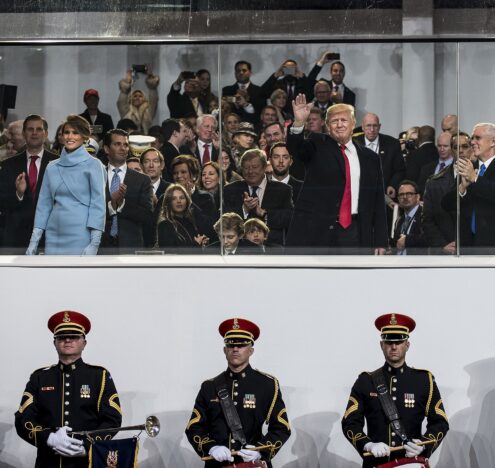This analysis was featured in Critical State, a weekly newsletter from Inkstick Media and The World. Subscribe here.
This week on Deep Dive, we’ll continue our look at some of the recent research identified by leading peacekeeping scholars Barbara Walter, Lise Morje Howard, and Page Fortna, as crucial to shaping future policy discussions around third-party peacekeeping. One of the major challenges peacekeepers face in managing transitions from conflict to post-conflict situations is that, after conflicts have formally ended, often the groups responsible for the most violence aren’t the warring parties that the peacekeepers initially showed up to manage. In order to control these new actors, peacekeeping missions have to be flexible — a quality they tend to lack by design. This week, we’ll dig into a new article from political scientist Corinne Bara in the European Journal of International Relations that investigates how peacekeepers cope with post-conflict violence, despite their limitations.
Bara’s insights into how peacekeepers manage post-conflict violence come from disaggregating two categories that are often presented as undifferentiated masses: violent acts and peacekeepers. It is relatively easy to come by data on how many people are killed in a certain country in the first year after the formal end of a conflict, but comparatively difficult to estimate which of those killings is an instance of post-conflict violence — violence that would not have taken place but for the conflict — and which are unrelated to the conflict. Similarly, it is easy to gather information on location and strength of peacekeeping missions, but relatively hard to determine what approaches different peacekeepers took in different situations. Bara solved both those issues, and in doing so produced some fascinating results.
To get an accurate picture of post-conflict violence, Bara mapped the instances of violence during the 71 conflicts she studied and then used that map to demarcate the conflict zones — the actual areas in which the conflict violence took place.
To get an accurate picture of post-conflict violence, Bara mapped the instances of violence during the 71 conflicts she studied and then used that map to demarcate the conflict zones — the actual areas in which the conflict violence took place. Then she built a database of instances of collective violence in the wakes of those conflicts that took place inside the conflict zones. The spatial limitation allowed her to weed out violence that took place in the post-conflict period but would likely have taken place even if the conflict had never happened.
Even with the instances of violence unconnected to the conflicts removed from the set, the role of third party actors — ie, those not directly involved in the conflict — in post-conflict violence is stark. Third parties are responsible for 66% of the deaths in Bara’s post-conflict dataset.
To gain a more accurate understanding of peacekeeper strategies in dealing with post-conflict violence, Bara differentiated between military troops and police officers deployed and part of United Nations peacekeeping missions. Soldiers in blue helmets do the things we tend to think of when we think of peacekeeping: going on patrols, maintaining buffer zones between warring parties, ensuring that those parties respect agreements on treatment of civilians, etc. In short, their job is to address the conflict and the groups that prompted the need for a peacekeeping mission in the first place. UN police, however, act to supplement and reform local security services in areas with peacekeeping missions. Their responsibility is not primarily to the warring parties but to the segments of the host country government that manage the threat of local violence.
Looking at the effect of military and police peacekeeper deployments on post-conflict violence, Bara found that UN police are broadly quite effective at discharging that responsibility. A deployment of 400 police predicts a 50% drop in violence during the five years after a conflict, and 1,000 police cuts post-conflict fatalities by an estimated 84%. More surprising, however, is that police were the only kind of peacekeepers who mattered in determining post-conflict violence. No amount of soldier deployments moved the needle on post-conflict fatalities one way or the other.
This is not to say that military peacekeeping deployments are useless in post-conflict situations — they often play a crucial role in making sure “post” remains a relevant modifier for describing the level of violence in an area torn apart by war. Nor does it suggest that UN police have cracked the code of fair and effective policing — the UN’s own reporting acknowledges that it has not. Bara’s results do suggest, however, that in areas where the international community has been invited to restrict the violence capacity of warring parties, there is also a role for it in helping to manage the state’s response to those who might step into the violence vacuum left behind by war.



















